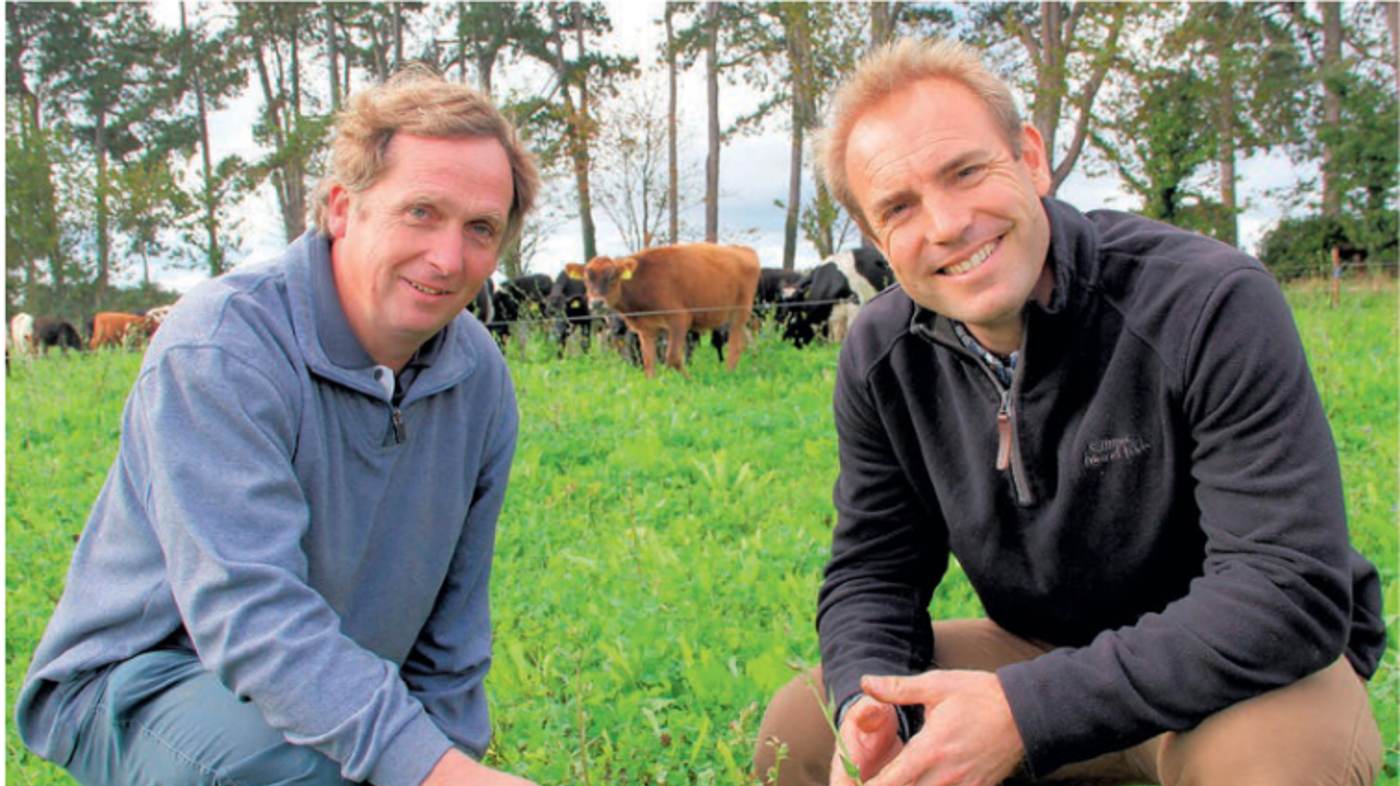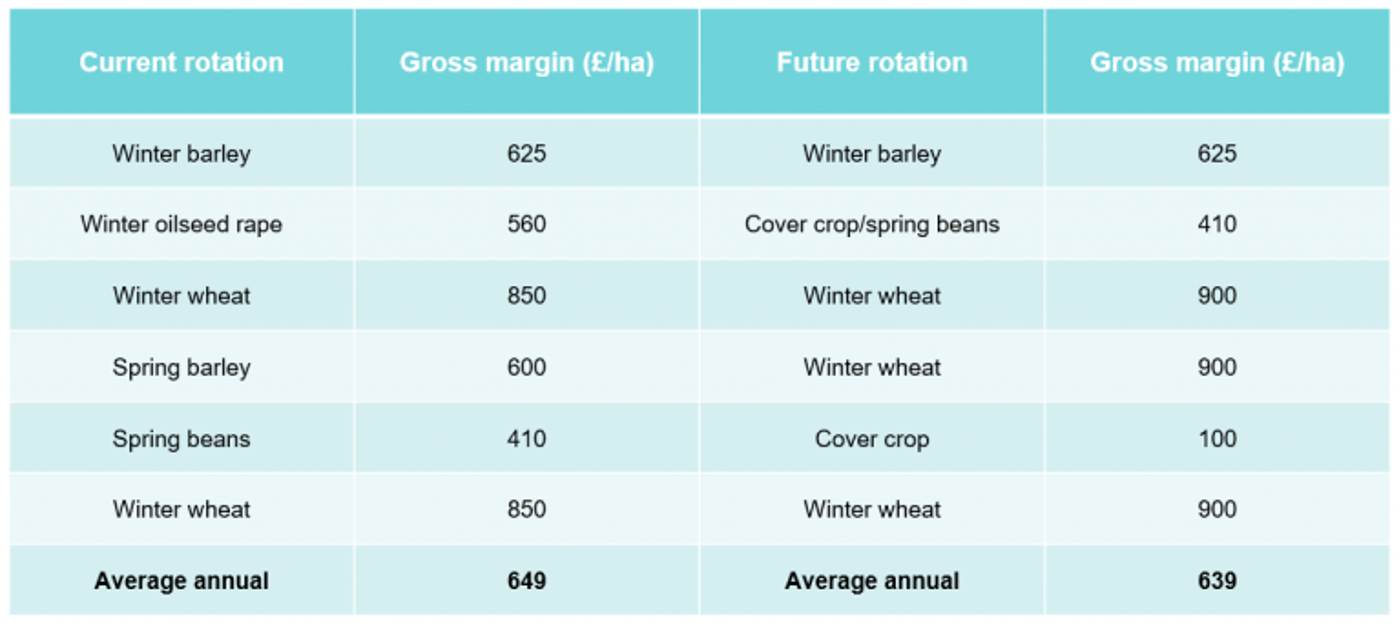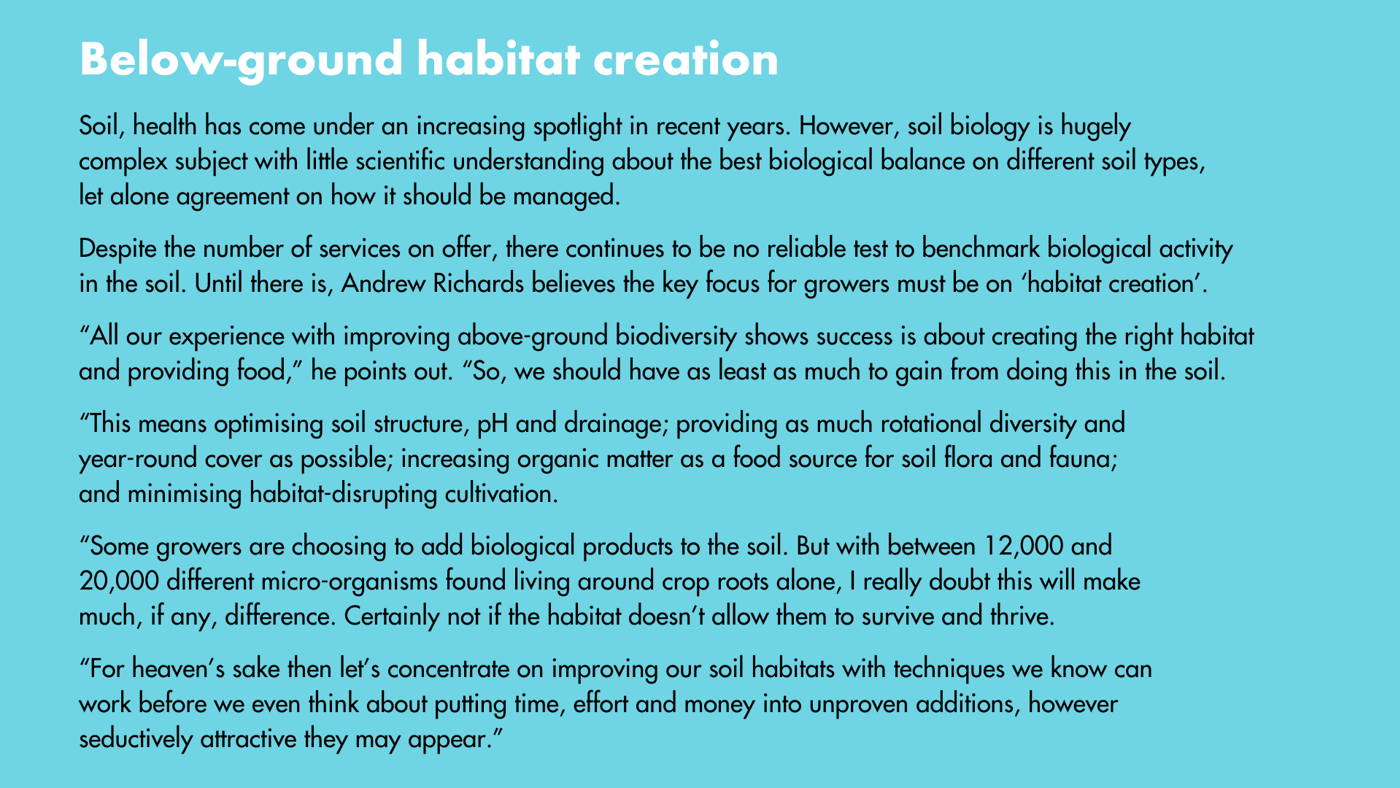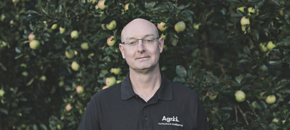
No-Till Contract Farming Recipe Proves Its Worth on the Cotswolds
News - 11.11.20
Diversity, flexibility and capacity are the cornerstones of the successful no-till contract farming business built by Toby Baxter for a growing number of landowners on the western edge of the Cotswolds over the past decade.
He and his Agrii agronomist, John Vickery have never been afraid of doing things differently. That’s why around half their first cereals are no longer wheat; they routinely employ double cereal breaks and four-year herbal leys; year-round soil cover is their standard practice; and all their cropping is closely integrated with both beef and sheep enterprises.
More than 10 different combinable crops are routinely grown across the 1400 ha of ground between Winchcombe and Wotton-under-Edge currently being farmed in joint venture contracts. These are complemented by a wide range of forage and cover crops, all supporting extensive beef and sheep grazing.
This diversity, a highly flexible rotational approach and sufficient machinery, seed and grain handling capacity give both the land and business the greatest ability to cope with changing environmental and economic conditions.
“Building resilience is our whole focus,” insists Mr Baxter. “For the most part, we’re not on 10t/ha-plus wheat land here. But we’ve found we can generate reliable margins from even the thinnest, stoniest ground with the right approach.
“We went into no-till on our first 380ha contract farm near Tetbury in 2012 and it hasn’t been without its challenges. But we prepared the way with min-tilling and were guided by the expertise of no-till specialist, Steve Townsend. So, the mistakes we made were manageable.

“The biggest lesson we’ve learnt is never to go on the land when the conditions aren’t right,” he says. “No-till definitely improves the health and carrying capacity of the ground. But it’s a long-term business. And because you’re only working such a small amount of the soil you have to give the land time to dry out on its own after rain. Which means sufficient flexibility and capacity so you never drill before its ready. Otherwise most of your management is fire-brigade.”
To ensure the flexibility they need, Toby Baxter and John Vickery have abandoned the idea of fixed rotations. They have an overall plan, but what is grown each season is dictated by the weather, more than anything else.
“Four-year herbal leys are proving especially useful in supporting first class beef and sheep performance” TOBY BAXTER
Having their own facilities mean they can clean and dress seed the day they drill. So, they never have to worry about leaving ‘pink seed’ in the shed. Equally, having two different drills means they can choose either tines or discs to suit the ground conditions.
For high capacity tine drilling on the bulk of the land, the 15m Amazone Condor has proved its worth, enabling as much as 125 ha to be sown in a day with a 230 hp tractor even at a restrained 4-6 kph to minimise soil disturbance and maximise planting precision. Where discs are better – such as for drilling into denser covers on the green or herbal leys – the 6m John Deere 750A also does an excellent job with a similarly low horse-power requirement.
“What we grow where and when depends on the conditions,” Mr Vickery emphasises. “Having three winter cereals (winter wheat, winter barley and triticale), three spring cereals (barley, oats and naked oats) and five break crops (winter OSR, winter and spring linseed, peas and beans) to choose from means we don’t have to force crops in when we really shouldn’t be on the land.”
“As we’ve gained experience with them, we’ve also been able to adapt and flex our cover crop growing and management to suit the season and the opportunities that present themselves.
“Ahead of spring barley, we still use the stubble turnips we’ve long found valuable for winter sheep feeding. But we now tend to mix them with linseed for its mycorrhizal activity and the structural support the woody stems give the soil during grazing.
“We’re growing a lot more rye these days too – mainly ahead of spring break crops. It’s a great feed for cattle and sheep. And we can drill it later in the autumn than the turnips.”
“By chance, last season when the deluge led us to replace winter wheat after OSR with spring naked oats, we found the volunteers left from the previous crop did the sheep really well. So, we’ve deliberately drilled some rye, linseed and vetch into them this autumn to make what we hope will be an even better winter fodder at very little cost.
“We will again be following this with naked oats grown on contract for GB Seeds,” he says. “At £50/t over feed wheat, the 5t/ha-plus we brought-in from a conveniently late sowing in April delivered a margin as good as an 8.25t/ha thin land first wheat. And we can follow them with wheat if we want to.”
Also stacking-up well against wheat as a first cereal for the business is winter barley, either as a seed crop for Agrii or Maris Otter for the brewing trade – around100 ha of each are grown on contract every year. Both give a good early entry for stubble turnips ahead of spring cropping.
Triticale, for local animal feed markets, comes into its own as a second, or even third – cereal in the regime too. It has been found to do well from early October drilling after a six-week mustard/phacelia catch crop and be highly competitive against black-grass as well as earlier to harvest than wheat. It also leaves a long moisture-conserving and flea beetle-confusing stubble nursery for OSR or stubble turnips.

He illustrates what can be done with an exercise he ran recently with a client exploring a lower risk, regenerative rotational option for heavy land. Last season, spring beans after a winter cover crop failed to establish on one block of land, so the multi-species cover they were sown into was left to grow until the autumn. This left a much better soil structure for the following wheat, making it a potential strategy for the future.
Using Agrii’s latest Maximising Arable Performance (MAP) benchmarking data from leading arable farms, Mr Richards comparing the farm’s previous rotation of six cash crops and an over-winter cover with an alternative involving five cash crops and such a year-long cover (See table below).
Despite the income of one less crop, the average annual gross margin over the rotation only fell by £10/ha – which, together with the cost of establishing and managing the extended cover could be easily offset by revenue from sheep grazing.
The rotational restructuring also offered valuable reductions in the fixed costs involved – especially in cultivation and harvesting – and a considerable saving in inputs – particularly bagged nitrogen.
“This sort of rotation really has a lot going for it,” Mr Richards says. “What’s more, any compaction before the land goes into the cover crop can easily be corrected with a low-disturbance subsoiler in the spring when soils are drying and in good condition.”
Table: Moving to a lower-risk regenerative rotation

Source: Agrii 2019 MAP Benchmarking data; assuming cover crop improves soil health and nitrogen use efficiency (less applied N), grazing mitigates cost of cover crops, reduced impact of take all on second wheats and no oilseed rape reduces slugs.
On the machinery side, he recommends gradually reducing tillage intensity by modifying existing machinery before splashing out on an expensive new direct drill, pointing to clients who have successfully fitted low-disturbance tines and less aggressive discs onto existing cultivators to disturb less soil.
Lifting the discs out of work on a cultivator drill can be valuable in reducing the level of tillage, too. As can be changing from the likes of a Horsch Joker disc cultivator to a Cruiser tine machine capable of working at shallower depths.
Second-hand tine drills can be a useful bridge from intensive cultivations to no-till, in Mr Richards’ experience, starting with crops like beans and gradually moving to cereals as soil workability improves. He has also found an element of Controlled Traffic Farming (CTF) to reduce compaction from trafficking across the field key to many no-till success stories.

The regenerative agricultural goal for most is to have an ultra-low disturbance disc drill as the sole establishment method. While many are making this approach work once soils are well-structured and organic matter levels sufficient, he always advises growers to maintain some flexibility in their system to cater for a maritime climate that is becoming far less predictable.
“Our aim has to be to build long-term strength and resilience into our soils, but no matter how good a soil becomes, 120mm of rain in a week in August is always going to create problems where we a large modern combine and weighty grain trailers.
“Some no-till drills are also heavy by nature, meaning they just aren’t going to be able to travel without damaging the ground in extremely wet autumns,” he adds. “So, we need to be willing and able to use a low disturbance subsoiler or a lighter weight tine drill with a shallow cultivator should the need arise.”
Join Our Community

Agrii X
We love engaging with clients and partners. Give us a follow and let's share stories for the community.

Agrii Instagram
A picture paints a thousand words. Follow us on Instagram to see what we are up to.

Agrii Facebook
Follow us on the worlds biggest social media site for the latest news and events straight to your feed.

Agrii LinkedIn
If you are all about the business, connect with us on LinkedIn to build your network
Stay In Touch

Newsletter Sign-Up
Receive email updates on topical news and information from around Agrii and UK Farming.

Listen To Our Podcasts
Listen to the Tramlines Podcast. Fortnightly chat about agriculture and trials with your host Tony Smith.

Agrii Insights
Read essential agri intelligence for profitable farming.

Find an Event
Join us for our upcoming events and tours.



